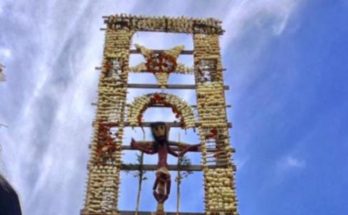By Arturo Morales Tirado
Upper Basin of the Laja River; Fundamental wetland in the life of the Altos de Guanajuato.
One of the fundamental natural and cultural wonders in the life of this Frontera Tierra Adentro (Inland Frontier) is, without a doubt, the Upper Basin of the Laja River and its wetlands, ultimately the genesis, for 2,500 years, of the origin of civilization in our region, around farming communities; however, it is one of our natural-cultural assets that is least cared for and valued by those of us who have lived here.
Laja River, tributary of the Lerma River, part of the Lerma – Chapala – Santiago Hydrological Basin includes such important metropolises as: Toluca, Querétaro, León, Guadalajara, where, currently (it constitutes about 20% of the country’s population), this , has its origin in the springs of Sierra de Lobos, and Sierra Cuatralba, (municipality of San Felipe), after continuing through the Nuevo Valle de Moreno and San Juan de los Llanos (passing today, through the Jesús María Dam). The upper subbasin of the Laja River receives water from tributary rivers and streams from other mountains and hills of the Altos de Guanajuato (Heigh lands of Guanajuato), including about 7 of the current municipalities of the State of Guanajuato: León, Guanajuato, San Felipe, San Luis de la Paz, San José Iturbide, Dolores Hidalgo, and San Miguel de Allende, right where the curtain of the Ignacio Allende Water Reservoir is located today, north of the Chamacuero Canyon.
In the wetlands of this river and its tributaries such as the San Damián River, Talayotes, La Virgen, Jalpa, among others, there is an agricultural tradition and the first sedentary pre Hispanic communities of more than 2,500 years, from the first settlements of the cultural tradition of the Chupícuaro, in the Mesoamerican formative period, continuing with the cultural tradition of the Proto-Toltecs, approximately between 500 to 1,150 BC, in the Mesoamerican classic period, until the settlement of itinerant Chichimeca groups, who would meet the Spaniards and their allies Otomi – Tlaxcalan – Zapotec in the 1530’s.
Upper basin Laja river
In turn, the Spanish invaders and their allies in these lands of the former Great Chichimeca, took advantage of the biological-cultural corridors of the upper Laja River and its tributaries to first find, in its beds, the metamorphic rocks, precursors associated with the ores of mercury, silver and gold, later to trace their routes to travel them with horses and mules and wagons for the transfer of minerals and/or metals and provisions, with the security of having a supply of the vital liquid in these tortuous itineraries, plus their products associated around agricultural lands, and later, livestock to secure food and claim rights and land tenure around these assets.
During the viceroyalty, around the Laja riverbeds and tributaries, in addition to the Camino Real de Tierra Adentro (UNESCO-2010), presidios, haciendas, inns, cattle ranches were founded, and royal water grants were granted, and thus the construction of bridges, dams, waterwheels and ditches; In parallel, to administer from the power of the peninsulares and criollos, viceregal chapels were founded for peace Indians, or: Indian chapels. Today, they constitute a rich and enormous inventory of tangible cultural assets and around them, due to their traditions and rituals, of intangible cultural assets.
In this sense, we can mention, among other estates, the following: La Quemada, Trancas, El Gallinero, La Erre, Rioyos, La Petaca, Jesús María, Atotonilco, La Grulla, Cruz del Palmar, Puerto de Nieto, Corral de Piedras, and about 30 more. As for the Indians Chapels and their paraphernalia such as ordeals, shrines, crosses on plinths, etc. more than three hundred. On the topic of hydraulic infrastructure, among others: Santa Rosa Water Reservoir, San Julián Water Reservoir, Calderón Water Reservoir; Sosnabar Ferris wheel, Corral de Piedras, El Charco del Ingenio fulling mill; as a union of roads:
Puente del Fraile, Puente de San Rafael, Puente de la Quemada, Puente de Sta. Teresita, and more. Sadly, together with the abandonment and contempt for the value of the environmental issues and services of the natural heritage of the wetlands of the upper basin of the Laja River, there is the flora and fauna of its surroundings, amazingly distributed in 4 ecosystems (wetlands, oak forest, gallery forest and low crasicaules chaparral), being one of the most beautiful and threatened the riverside willow groves and their wetlands in their swamps, suffice it to mention that among other species we have: the migratory Monarch Butterflies, the American storks and the acitroneras biznagas cactus. Invitation to learn about and value our natural wonder, the upper Laja River. How? living it, understanding it, protecting it and managing its restoration and preservation, thus continuing to enjoy and honor it, for us and for future generations.




